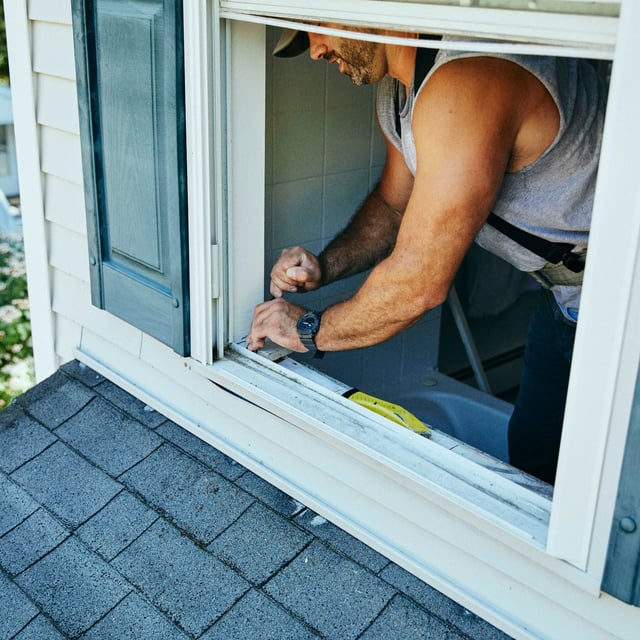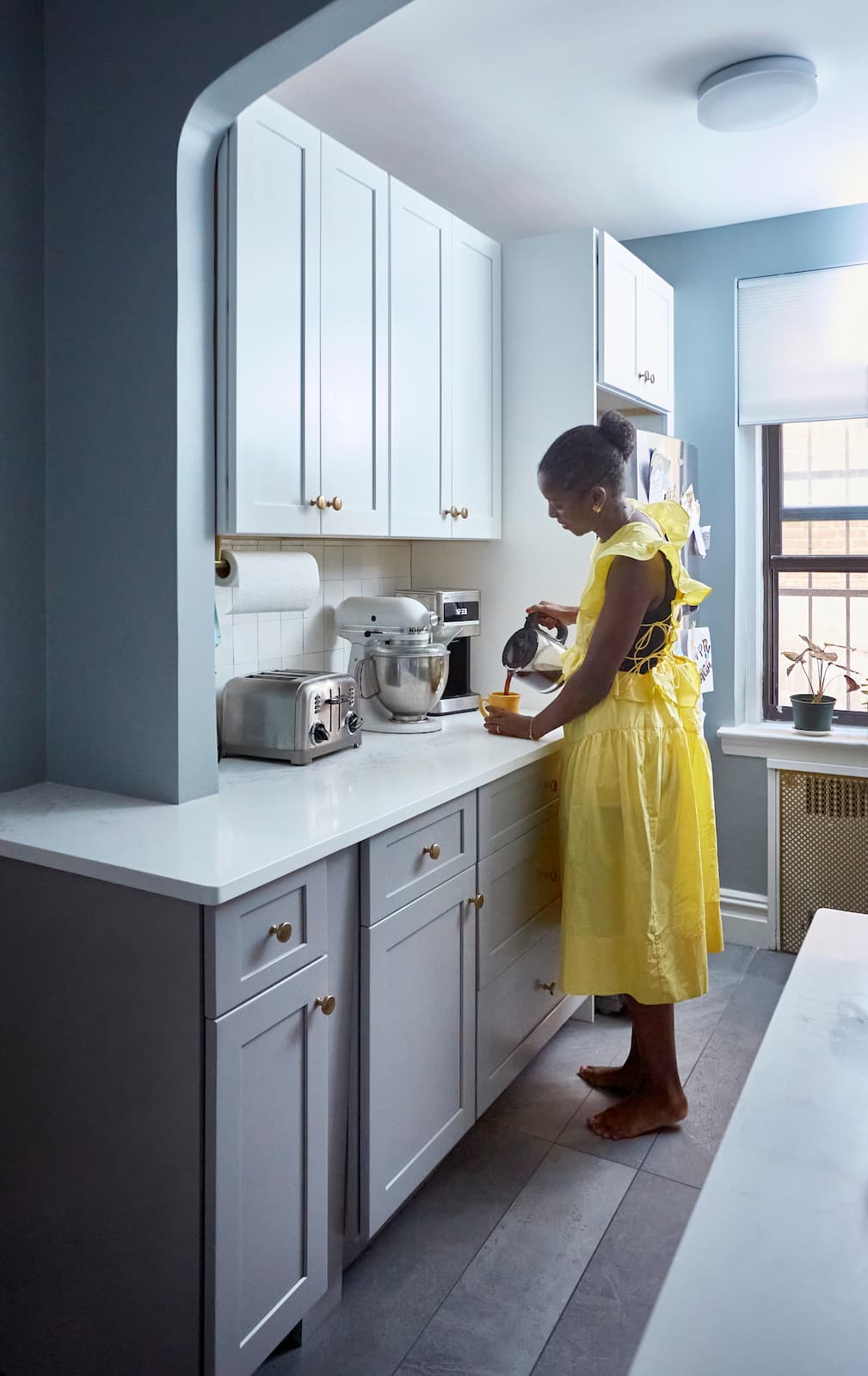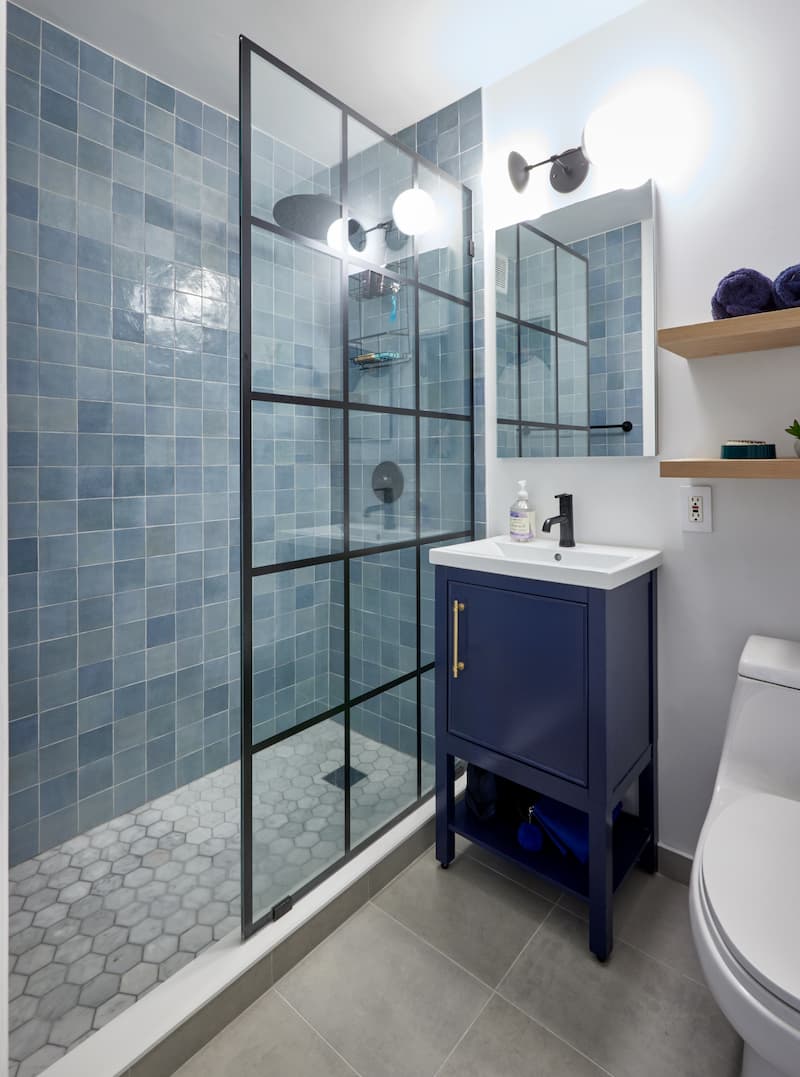Finding and Fixing Drafts in Your House

In This Article
A drafty home can impact your comfort, energy bills, and even your health. Whether you’re feeling a chill in the winter or struggling to keep your home cool in the summer, identifying and fixing drafts is a smart step toward a more comfortable, efficient, and welcoming space. After all, unchecked drafts can lead to:
- Increased energy bills: Drafts force your heating and cooling systems to work harder, leading to higher utility costs. Sealing drafts can help you save money year-round by improving your home’s energy efficiency.
- Reduced Comfort: Cold spots and uneven temperatures can make your home feel less inviting. Addressing drafts helps maintain a consistent, comfortable environment in every room.
- Potential for moisture and mold: Drafts can allow moisture to enter your home, increasing the risk of mold and mildew. Preventing drafts helps protect your home’s structure and your family’s health.
- Environmental Impact: Wasted energy from drafty homes contributes to unnecessary carbon emissions. By fixing drafts, you’re making a positive impact on the environment.
How to Find the Sources of Drafts
While some drafts are easy to spot, others can be subtle and require a bit of detective work. Ideally, a knowledgeable contractor will help you identify hidden sources and recommend the best solutions for your home. However, to get you started, here are some effective methods for finding drafts:
- Visual inspection: Walk through your home and look for visible gaps or cracks around windows, doors, baseboards, and vents. Pay special attention to areas where different building materials meet, as these are common trouble spots.
- Hand test: On a windy day, slowly move your hand around the edges of windows, doors, and electrical outlets. If you feel a noticeable temperature change or a breeze, you’ve likely found a draft.
- Candle or incense test: Light a candle or stick of incense and hold it near suspected drafty areas. If the flame flickers or the smoke wavers, air is moving through a gap. This simple test can help pinpoint even small leaks.
- Thermal camera or infrared thermometer: These tools can reveal temperature differences in your walls, floors, and ceilings. Cold spots often indicate where outside air is entering your home. Many contractors use these devices for a thorough assessment.
- Professional Blower Door Test: A contractor can perform a blower door test, which uses a powerful fan to depressurize your home and measure how much air is leaking in. This test provides a comprehensive overview of your home’s airtightness and highlights areas needing attention.
Design a Home That’s Uniquely Yours
Block can help you achieve your renovation goals and bring your dream remodel to life with price assurance and expert support.
Get Started
Common Sources of Drafts in Homes & Their Fixes
Seal and Insulate Your Attic
The attic is one of the most common—yet often overlooked—sources of heat loss in a home. That’s especially true for older houses or ones with aging or minimal insulation. Since warm air rises, it naturally heads for the attic. And if that space isn’t properly sealed, it escapes through small cracks and gaps you may not even see.
Typical problem areas include the attic hatch, gaps around plumbing and wiring, recessed lights, and vent pipes. Over time, insulation can shift or settle, leaving exposed areas where air flows freely between your home and the outdoors.
To fix potential drafts, start with a careful inspection. Look for visible gaps and seal them using expanding foam or caulk. Add weatherstripping around the attic hatch, and focus on where different materials meet—those junctions are frequent leak points. Once the space is sealed, top off or replace your insulation. Whether you use fiberglass batts, blown-in cellulose, or spray foam, the goal is the same: create a continuous thermal barrier.
A well-sealed attic doesn’t just cut down on drafts. It helps keep your home comfortable year-round, reduces energy costs, and can even prevent winter roof damage from ice dams.
For more tips on improving this particular area of the home, read The Complete Guide to Attic Renovation Costs.
Evaluate Your Basement
Basements are another common entry point for drafts, especially in homes with unfinished or partially finished lower levels. Cracks in the foundation, gaps around windows, and openings where pipes or wires enter the home can all allow cold air to seep in. These drafts can make basement spaces uncomfortable and contribute to chilly floors in the rooms above.
Your contractor will begin by inspecting the perimeter of your basement, looking for visible cracks in the concrete or masonry. They will most likely use a high-quality caulk or masonry sealant to fill small cracks, and consider hydraulic cement for larger gaps. Around windows, they will check for deteriorated caulking or missing weatherstripping, and replace as needed.
For pipe and wire penetrations, expanding foam is an effective solution. If your basement walls are uninsulated, your contractor may recommend rigid foam board or spray foam insulation, as both can make a significant difference in both comfort and energy efficiency.
Last but not least, your contractor will want to evaluate the rim joist—the area where the foundation meets the wood framing—as this is a notorious source of air leaks in older homes.
Upgrade Your Windows
Windows are a major culprit when it comes to household drafts—especially if they’re old, single-pane, or poorly sealed. Over time, frames can shift, caulk can dry out, and weatherstripping can break down, all of which open the door (or window) to unwanted air leaks. The result? A less comfortable home and higher energy bills, as your HVAC system works overtime to make up for the loss.
If it’s in your budget, upgrading to energy-efficient windows—double- or triple-pane with low-E coatings—can dramatically reduce heat transfer and eliminate drafts. But even if full replacement isn’t realistic right now, there are effective ways to improve performance. A contractor can reseal the perimeter with fresh caulk, replace worn-out weatherstripping, or add insulating film for the winter months. For older windows, adding storm windows is another solid option.
These fixes might seem small, but together they can make your home feel warmer, quieter, and more efficient year-round.
Further improve the efficiency of your home with tips from 15 Energy Efficient Home Improvements That Save You Money.
Replace Floorboards With Large Spaces
Gaps between floorboards are often overlooked as a source of drafts, but they can have a significant impact, especially in homes with wood floors over unconditioned spaces like crawl spaces or basements. These gaps allow cold air to rise from below, making floors chilly and rooms harder to heat.
To fix this, your contractor will first identify the extent of the gaps. For minor gaps, flexible wood filler or rope caulk can be pressed into the spaces to block airflow. For larger or more persistent gaps, it may be necessary to refit or replace the floorboards entirely. In some cases, adding a subfloor or underlayment can help create a tighter seal and provide additional insulation.
Evaluate the Installation of Recessed Lighting
Recessed lighting, especially when installed in ceilings below attics or unconditioned spaces, can be a hidden source of drafts. Standard recessed light fixtures often have gaps around the housing that allow air to move freely between floors or from the attic into living spaces. This not only leads to drafts but can also reduce the effectiveness of your home’s insulation.
To fix this, your contractor will check that all recessed lights are properly sealed. Airtight (IC-rated) recessed light fixtures are designed to prevent air leakage and can be installed as replacements for older, leaky models. For existing fixtures, use caulk or foam sealant around the housing where it meets the ceiling, being careful to follow fire safety guidelines. In the attic, ensure that insulation is properly installed around the fixtures, but never cover non-IC-rated lights with insulation, as this can be a fire hazard. Upgrading to airtight fixtures and sealing gaps can make a noticeable difference in both comfort and energy efficiency.
Assess Your Ductwork
Ductwork that runs through unconditioned spaces—like attics, basements, or crawl spaces—can be a major source of energy loss if it’s not properly sealed and insulated. Leaky ducts allow heated or cooled air to escape before it reaches your living spaces, making your HVAC system work harder and increasing your utility bills. In some cases, disconnected or poorly joined ducts can create significant drafts and uneven temperatures throughout your home.
Have a professional inspect your ductwork for visible gaps, holes, or disconnected sections. Sealing ducts with mastic sealant or metal tape (not standard duct tape) is the most effective way to stop leaks. Once sealed, insulate ducts in unconditioned spaces to prevent heat loss or gain. Regular maintenance and inspection of your ductwork can improve your home’s comfort, reduce drafts, and extend the life of your HVAC system.
Focus on the Fireplace
Fireplaces, while charming and cozy, can be a significant source of drafts when not in use. An open or poorly sealed damper allows cold air to enter and warm air to escape, making it difficult to maintain a comfortable temperature in your home. Even with the damper closed, older fireplaces may have gaps or cracks that let air pass through.
To minimize your house’s drafts, always close the damper when the fireplace is not in use. Inspect the damper for a tight seal and replace or repair it if necessary. For added protection, consider installing a chimney balloon—a reusable device that blocks airflow up the chimney when the fireplace is not in use. Glass fireplace doors can also help reduce drafts and improve safety. If you rarely use your fireplace, a professional can permanently seal the flue or install an insulated chimney cap for maximum efficiency. Regular maintenance and inspection are key to keeping your fireplace both functional and draft-free.
Know the Cost Before You Start

Additional Low-Budget Ways to Lessen Your Home’s Draftiness
- Thicker curtains: Heavy, insulated curtains can help block drafts from windows and keep rooms warmer. They’re an easy, stylish way to add comfort and energy savings.
- Add Area Rugs: Placing rugs on bare floors helps insulate against cold air coming up from below and adds a cozy touch to your space.
- Hang Tapestries or Wall Hangings: Adding fabric wall hangings or tapestries can help insulate exterior walls. They add visual interest while providing an extra layer of warmth.
- Install Door Sweeps: Door sweeps are easy to attach to the bottom of doors and help block cold air from sneaking in. They’re affordable and require no special tools to install.
- Use Weatherstripping Tape: Self-adhesive weatherstripping can be applied around windows and doors to seal small gaps. It’s simple to use and can be removed or replaced as needed.
- Apply Removable Caulk: Removable caulk is perfect for sealing small cracks around windows and doors during colder months. It peels away easily in the spring, making it a great temporary solution.
- Cover Mail Slots: Mail slots can let in a surprising amount of cold air. Use a magnetic or brush-style cover to block drafts when the slot isn’t in use.
- Seal Electrical Outlets: Cold air can seep in through electrical outlets on exterior walls. Foam outlet gaskets are easy to install and help block unwanted airflow.
Trust Experienced Contractors From Block Renovation to Fix Your Home’s Drafts
While items like rugs and curtains can act like band-aids to your house’s drafts, these are not long-term viable solutions for air leaks. Those can only come from an experienced contractor. Block Renovation connects you with vetted contractors who understand the unique needs of your home, whether that be Victorian architecture or a colonial house. From thorough inspections to expert repairs, our network ensures your home stays comfortable, efficient, and protected year-round.

Written by Block Renovation
Frequently Asked Questions
What kinds of houses are most susceptible to drafts?
What rooms of the house are most likely to be drafty?
How can I maintain healthy airflow throughout my home?

Renovate confidently with Block
Easily compare quotes from top quality contractors, and get peace of mind with warranty & price protections.
Thousands of homeowners have renovated with Block

4.5 Stars (100+)

4.7 Stars (100+)

4.5 Stars (75+)
Renovate confidently
- Top quality contractors
- Warranty & price protections
- Expert resources

